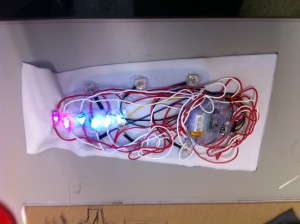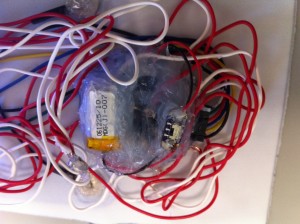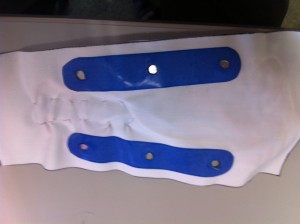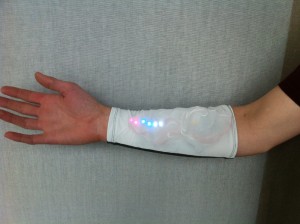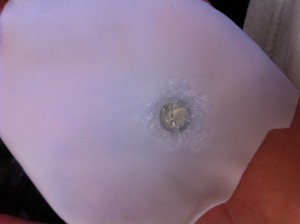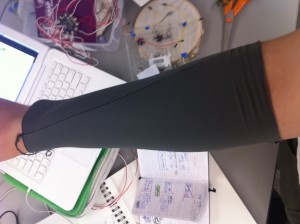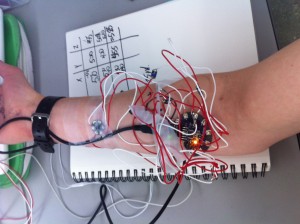here are the circuit guts of the sleeve
closeup of the main circuit board “puck”, surrounded with silicone caulk
here is a detail of the 6 magnets used to have a waterproof connection to the circuit to charge and reprogram
here is a tweet from a SoHE social media guru @UWMadSoHE
1) Describe the operation of your final project. What does it do and how does it work?
My project is a waterproof, swimming arm sleeve that is worn as a motivational tool to help facilitate aquatic workouts. It functions by counting individual strokes, that accrue to light up six successive LEDs to indicate the user how long they have been working out.
2) Overall, what are your feelings about your project? Are you happy, content, frustrated, etc.?
I am overall happy. I need a little bit of break from my project, which I think everyone experiences once finishing something big, but I’m sure in about 3 weeks I will be excited about it again, and I will actually try swimming with it.
3) What were the largest hurdles you encountered in your project and how did you overcome these obstacles?
My largest hurdle was organizing everything that needed to go into the armband. This main hurdle was obtaining supplies online and waiting for them. I was ordering fabric, magnets, LEDs, an accelerometer through three websites and then obtaining silicone caulk and wire in-store. Organizing all of these components was a struggle for me and it did drag my schedule behind, but it overall worked out.
4) How well did your project meet your original project description and goals?
I think my final product 95% matched what I was intending to make. The main component that went into this is my waterproofing design and Nathan’s idea of splitting the USB and having magnet ports. The 5% off was I think the use of a switch to turn the battery off and allow the entire circuit to reset. This was a last-minute design decision that I had neglected, but luckily Kevin helped me through it.
5) If you had more time, what would you do next on your project?
If i had more time, I would make the overall package more streamlined in two separate areas of the circuit design and then the fabric sleeve itself. I would redesign the circuit to include less wire, that is also more flexible to make the entire arm sleeve less bulky. I would also redesign the arm sleeve to accept the circuit better and possible include a clear fabric to see the circuit more clearly. On a second chance, I would also put the 6 magnet USB ports to the outside as a visual element to show off the tech.

